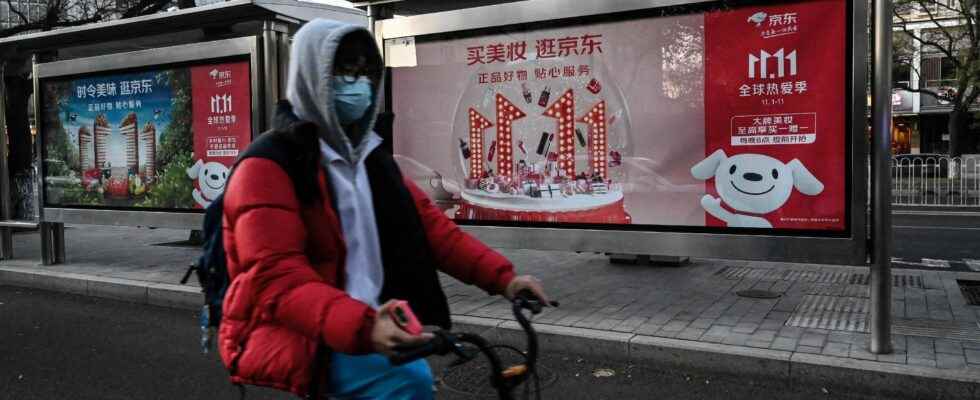Message heard! Ten days ago, young people marched in the major cities of the Chinese Empire, white paper in hand, demanding the end of the “zero Covid” policy. A reduction in health measures was announced this Wednesday, December 7 by the all-powerful Health Commission. Important point: asymptomatic or mild positive cases will no longer be sent by the “white guards” in cosmonaut outfits to the dreaded isolation centers where real and supposed patients were piled up. They will be able to stay at home if they are asymptomatic or “lightly ill”.
The frequency of mandatory tests will decrease and travel between provinces will be able to resume. These were the most recurrent demands, at the end of November, of this Chinese opinion which, for three years, had silently accepted an increasing restriction of the freedoms acquired during the decades of openness.
The death, at the age of 96, of Jiang Zemin, the former President and leader of the Communist Party (in power from 1989 to 2003) left the authorities ten days to reflect. This death has indeed allowed to open a week of national mourning. A way to “freeze” the demonstrations and to better accept the closures of restaurants and shops while, behind the curtain, the debate was fierce between supporters of the reopening and defenders of the “white guards”. Even the – very colorful – mobile phone applications spent the week behind a respectful black and white filter: a way of reminding more than a billion users that it was time for meditation.
Ending “zero Covid” without officially saying so
Tuesday, December 6, alarm sirens, never heard since the tribute to the victims of the 2008 earthquake, officially ended this strange week. It was just 10 a.m. when the loudspeakers began to crackle in the very clear and icy sky of Beijing. The long, mournful lament of three minutes interrupted conversations, distance learning from schools, causing panicked birds to take flight. Three minutes of “recollection” to allow everyone to question themselves, to open television, radio or social networks and try to understand what was going on. A gigantic ceremony was broadcast on all screens, live from the People’s Palace, where all the dignitaries were gathered, in dark suits, white shirts, black ties, masks and white carnations in their buttonholes. For more than 45 minutes, Chinese President Xi Jinping paid tribute to his predecessor, recalling how Jiang had succeeded in leading China’s reforms and opening up and placing himself as the heir of his policy. A way of signifying, without officially saying it, the end of the “zero Covid” policy.
That same week, articles from medical experts multiplied, preparing minds for the idea that the Omicron virus, which is currently raging in China, was certainly more contagious, but in fact less virulent than the Wuhan strain in 2020, or the 2021 Delta variant, which had prompted the “zero Covid” policy. For months already, medical experts had been trying to make their voices heard, but their message remained blocked by the powerful Health Commission.
A million deaths this winter?
How to explain this sudden acceleration of the decision? The Chinese President’s participation in the G20 and then Apec summits last month, during which he exchanged views with his international counterparts, certainly played a role. Just like the perception, in high places, that the pinnacle of resilience was reached by the population, young people in particular, nearly 20% of whom are hit by unemployment. The economic results are also much lower than expected with an estimated growth rate of around 3% in 2022 against 5.5% announced at the start of the year and numerous bankruptcies – even exports fell in November. The power preferred to defuse the wave of discontent.
Is China ready to face the virus on the health level? For the moment, a hundred hospitalizations have been officially recorded in Beijing and only two deaths. But the figures are certainly underestimated, with many positive cases not reporting and treating themselves at home. The working population had been vaccinated (with Chinese vaccines), but only 40% of octogenarians received three doses. Uncertainties are particularly strong around the elderly and the government has ordered that vaccinations resume. Cautious, most Chinese old people prefer to continue to wait at home for the virus to pass. Anti-fever and cold medicines, again authorized for sale, cannot be found. Based on projections from Wigram Capital Advisors, an advisory firm that modeled the pandemic, reported by the FinancialTimes, the winter wave could last until mid-March and cause a million deaths. China will no doubt be tempted by a hybrid approach aimed at both vaccinations and natural immunity. A transitional phase that the Chinese welcome with mixed feelings of relief and concern.
